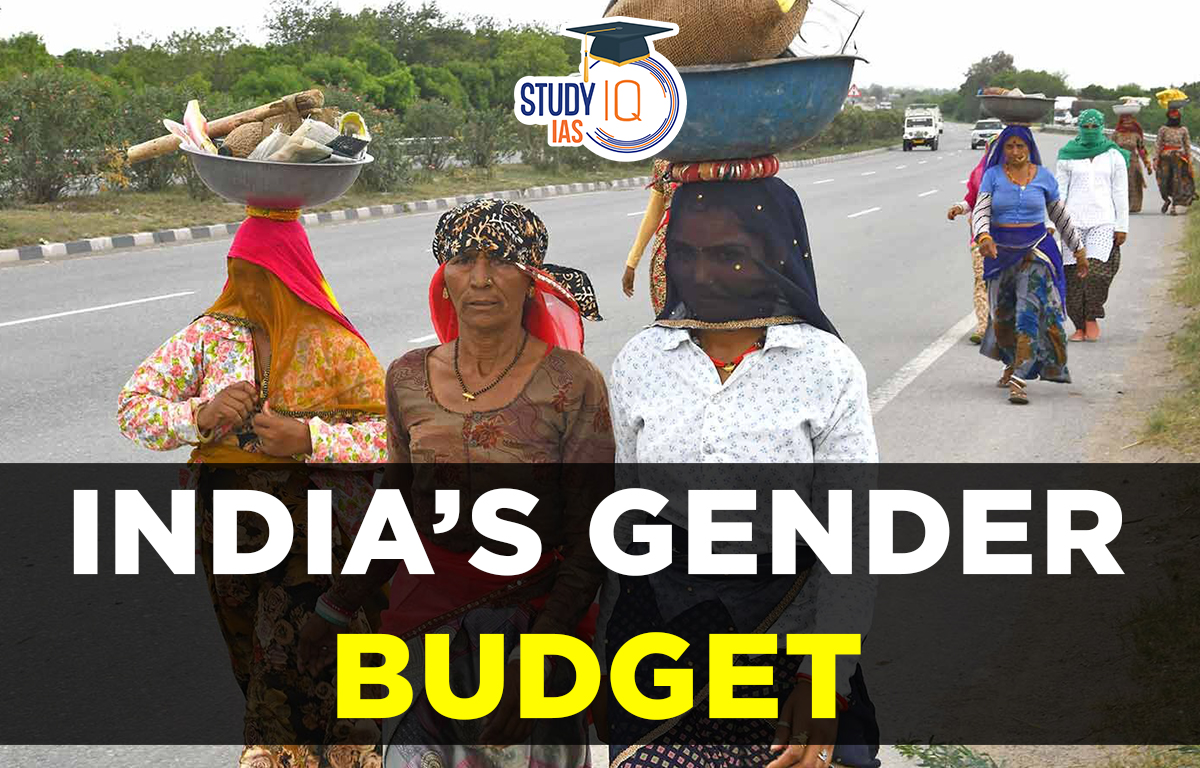Table of Contents
Context: The Finance Minister in the recent Union Budget laid out a vision for Viksit Bharat (Developed India) with the goal of achieving 70% women in economic activities. The inclusion of women as a priority within this framework reinforces the government’s pledge towards women-led development.
Recent Budget Announcements for Women Empowerment
Increased Gender Budget Allocation
- Gender Budget: ₹4.49 lakh crore, which is 8% of the total Budget (highest in two decades).
- 49 Union Ministries and Departments now have gender budgets.
- 12 new Ministries from non-conventional sectors (Railways, Ports, Shipping, Land Resources, Pharmaceuticals, etc.) have integrated gender-responsive budgeting.
Enhanced Funding for Women-Centric Schemes
₹1.24 lakh crore (52% of these funds directly benefit women and girls) allocated to key skilling and livelihood schemes, including:
- Skill India Programme
- Entrepreneurship & Skill Development Programme (ESDP)
- National Skill Training Institutes
- Deendayal Antyodaya Yojana – National Rural Livelihoods Mission (DAY-NRLM)
- Mahatma Gandhi National Rural Employment Guarantee Scheme (MGNREGS)
- PM Employment Generation Programme
- PM Vishwakarma
- Krishonnati Yojana
Support for Women in the Gig Economy
- Formalisation of gig workers through identity cards and registration on the e-Shram portal.
- Access to social security benefits and financial inclusion
- Emphasis on labour code enforcement for job security, maternity benefits, and social protection.
Financial & Digital Inclusion
- ₹600 crore dedicated gender budget under the India AI Mission.
- Centre of Excellence on AI for Education to enhance digital literacy and workforce inclusion.
- Easier access to credit for women entrepreneurs, including collateral-free loans.
- Delinking Kisan Credit Cards from land ownership to support women farmers in accessing loans and credit.
| Periodic Labour Force Survey (PLFS) Data on Female Labour Participation |
|
Way Forward: Realizing 70% Women’s Economic Participation by 2047
Diversity of Economic Roles
- Bridge the gender gap in leadership roles by incentivizing companies to promote women executives.
Financial & Economic Inclusion
- Expand credit access with alternative credit scoring models and collateral-free loans.
- Encourage Women-Led MSMEs through targeted incentives and digital marketplaces.
- Establishing 30 million additional women-owned businesses could generate 150-170 million jobs by 2030.
- Introduce gender-disaggregated tracking for government welfare and loan schemes.
Strengthening Social Protection
- Extend maternity benefits and childcare support for informal sector workers.
- Strengthen social security entitlements under e-Shram for gig and informal sector women workers.
- Enhance safety and workplace rights through better labour law enforcement.
Policy & Norm Transformation
- Simplifying documentation requirements for economic and social security provisions, such as delinking Kisan Credit Cards from land ownership, would help women farmers avail loans and credit facilities.
- Promote mindset change campaigns to shift societal attitudes toward women’s economic roles.


 Growth in Gold Loans and NPAs, Reasons a...
Growth in Gold Loans and NPAs, Reasons a...
 How RBI Responded To Global Trade War Ch...
How RBI Responded To Global Trade War Ch...
 Why Confidence in US Dollar is Falling?
Why Confidence in US Dollar is Falling?





















